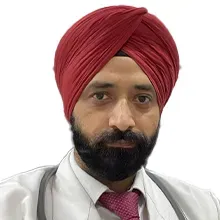Overview of Tonsillectomy Treatment India
Tonsillectomy is a surgical procedure in which tonsils, the two rounded tissues that are present at the back on both sides of the throat, are removed. Tonsillectomy is performed when the tonsils are abnormally swollen due to infection or any other reason and are causing various symptoms that can irritate the patient. The swelling of tonsils can also be the reason for cancer and can affect the quality of life of patients such as difficulty in sleeping, pain and limited intake of food due to the discomfort. Tonsillectomy surgery is performed when all the other treatments failed to treat the condition. This procedure is also used to treat the breathlessness in sleep because the swelling of tonsils can cause difficulty in breathing. Risks of the tonsillectomy are the same for any other surgical procedure and should be managed and prevented. There are also some restrictions of food, medications and fluids after the surgery. Tonsillectomy is not a very complex surgical procedure and requires less time for recovery. Recovery time for each individual can be different but in general 3 to 4 weeks are required for the complete recovery after the surgical process of tonsillectomy.
Types of Tonsillectomy Treatment India
There are many types of tonsillectomy procedures according to the technique of surgery. These are:
- Traditional Tonsillectomy
- Electrocautery
- Laser Tonsillectomy
- Ultrasonic Dissection
- Radiofrequency Ablation
- Coblation Tonsillectomy
- Partial Tonsillectomy
Traditional Tonsillectomy
This is the most common type of tonsillectomy where the tonsils are removed through the mouth by using a special type of cutting instrument. It is usually performed to remove both the tonsils when they are swollen due to some disease or infection.
Electrocautery
In this procedure, an electric current is used to heat up the tissues and remove the tonsils. This procedure controls excessive bleeding during the procedure.
Laser Tonsillectomy
In this type of tonsillectomy, a laser is used to remove the tonsils. This method is often performed because it has the advantage of reducing pain and bleeding as compared to the traditional method.
Ultrasonic Dissection
This technique uses sound waves to break down the tissue and remove the tonsils. It has the advantage of less pain after the surgery and also it needs less time for the complete recovery.
Radiofrequency Ablation
This method uses x-rays to shrink the size of the tonsils. It is less invasive than traditional tonsillectomy and may be suitable for specific cases where traditional methods cannot be performed due the poor condition of the patient.
Coblation Tonsillectomy
This procedure uses controlled high radiation therapy and a specific solution at the same time to remove the tonsils. It is designed to reduce the chances of damage to surrounding tissues and less pain during and after the surgery.
Adenotonsillectomy
This is a surgical procedure in which tonsils are removed alongside adenoids which are also present in the back of the nose or throat. The adenoids and tonsils are removed at the same time in this surgery.
Partial Tonsillectomy
Partial Tonsillectomy procedure involves removing only a damaged part of the tonsils. It is also known as "tonsillotomy". This might be considered in cases where only the part of tonsil is affected and complete removal is not necessary.
Procedure of Tonsillectomy
The general overview of the tonsillectomy procedure is described below:
Anesthesia: Tonsillectomy is usually performed under the effect of anesthesia. This is used to reduce the pain and irritation during the procedure.
Surgery: The surgeon will access the tonsils through the mouth. There are different techniques for removing the tonsils, including:
Traditional technique: The surgeon uses a scalpel to cut and remove the tonsils.
Electrocautery: A special tool uses heat to cut and remove the tissue.
Laser: A laser is used to remove the tonsil tissue.
Tissue Removal: The surgeon carefully removes the tonsil tissue from the underlying muscles and structures. Different techniques are used to control the bleeding.
Closure and Recovery: After the tonsils are removed, the surgical area is left to heal on its own. No external stitches are usually needed. However, some precautions are instructed to follow.
Postoperative Care: Some medications are used in the recovery period to speed up the recovery process. This may involve medications to control the pain and bleeding. Some instructions are given by the doctor for eating, drinking and cleaning habits.
Diagnosis of Tonsillectomy Treatment India
Cost of Tonsillectomy in India
The cost of Tonsillectomy in India ranges from 639 USD to 1065 USD. The cost can vary according to the facilities of the hospital and the condition of each patient. The cost can also vary according to the type of technique used in surgery.
| Treatment Costs in India |
Min in USD |
Max in USD |
| Tonsillectomy Surgery |
639 USD |
852 USD |
| Adenotonsillectomy |
799 USD |
1065 USD |
Symptoms and Risk factors
Some of the conditions where the surgical procedure of tonsillectomy is performed are:
- Recurrent or chronic tonsillitis
- Enlarged tonsils causing difficulty in breathing
- Tonsil abscess
- Persistent or recurrent sore throat
- Tonsil-related breathing problems
- Tonsil stones causing discomfort
- Bacterial infections such as frequent strep throat infections
- Recurrent bleeding from the tonsils
- Tonsil-related complications affecting the ears or mouths
- Suspected tonsil cancer
- Bad breath due to damaged tonsils
Risk Factors of Tonsillectomy
Bleeding
Tonsillectomy can lead to bleeding after the surgery. This may require additional methods to treat the complication. In rare cases, the patient needs additional surgery.
Infection
There is a risk of infection after surgery. The infection can appear late after the surgery and can also spread anywhere in the body.
Anesthesia Risks
Anesthesia also has some risk factors such as allergic reactions, breathing issues, and adverse reactions to medications. However, not every patient has the allergic reaction to anesthesia.
Pain and Discomfort
Tonsillectomy has the complication of pain and irritation after the surgery. But it can resolve without any treatment other than medications.
Change in Voice
Sometimes, surgery can damage the voice box in the throat which can lead to change in voice and may need additional treatment.
Dehydration
Patients usually avoid the food and fluid intake after the surgery due to pain and discomfort. This can lead to dehydration and lack of nutrition.
Breathing Problems
Swelling after the surgery can cause breathing problems in patients. Patients are usually unable to sleep because of breathing issues.
Scarring
Scarring might occur in the surgical area which can lead to discomfort. Sometimes nerve damage occurs and may cause changes in sensation.
Regrowth of Tonsil Tissue
There is a slight chance that some tonsil tissue can regrow and produce symptoms of pain, irritation and difficulty in breathing.
Delayed Recovery
Some individuals might experience a longer recovery period than normal. It is more common in smokers.
Top Doctors for Tonsillectomy in India
Empower your Health with the Expertise of Leading Medical Professionals.
Dr Ashok Vaid
Department of ENT & Medical Oncology
Medical Oncologist
Book Appointment
Treatment Costs for Tonsillectomy
Be the change and be an opportunist in transforming healthcare.
How it's Works
Guiding your Journey from Discovery to Treatment Planning and Beyond.
Discovery
Get a consultation to discover about your treatment
Pre-Treatment
Admission to the best hospital and all pre-treatment facilities
Post Treatment
Get post-treatment follow-up care with medicine fulfillment
Treatment Planning
Hassle-free treatment planning with package & cost estimations
in-treatment
world-class quality procedures and equipment for treatment





















